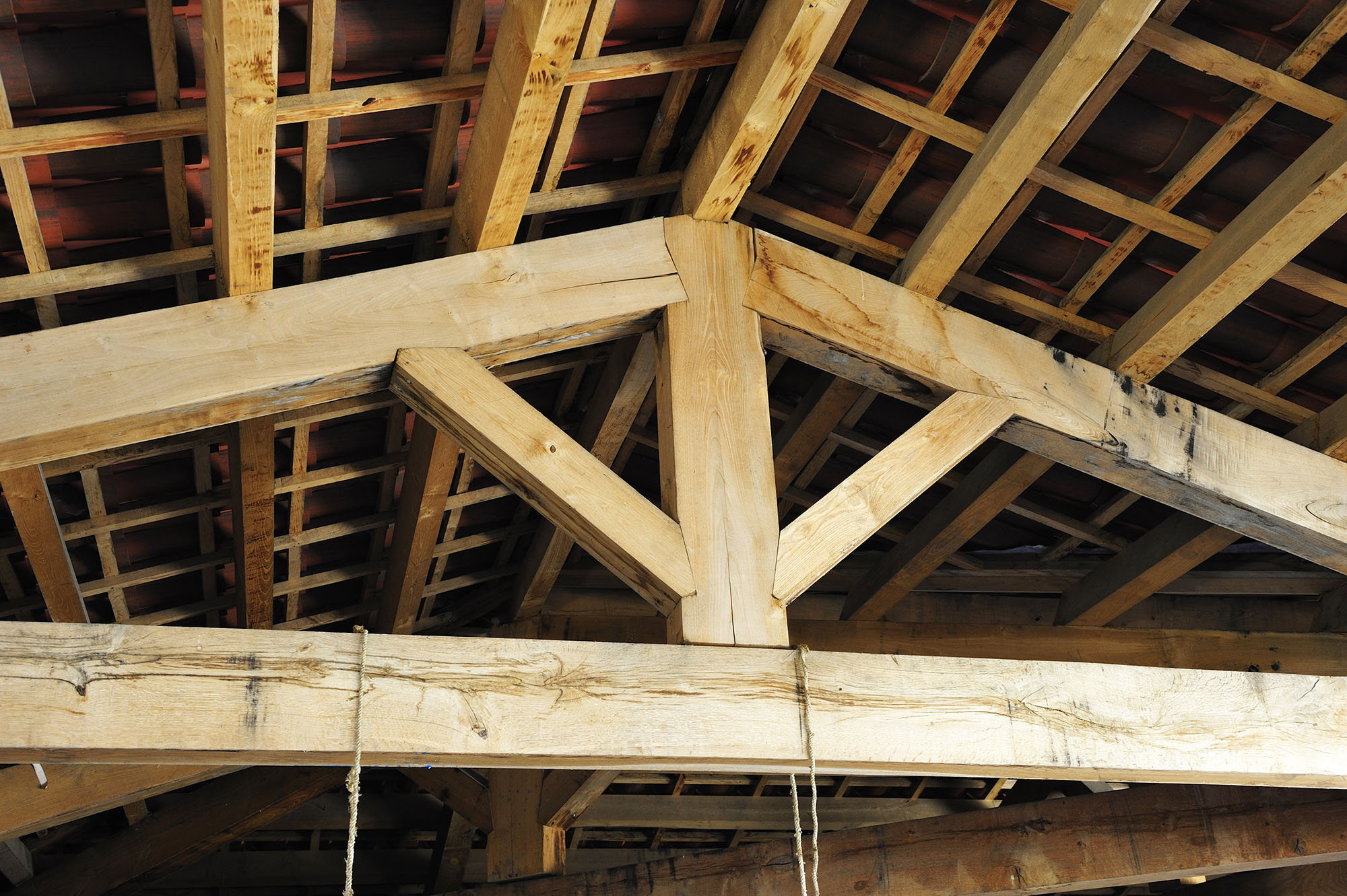This time-tested method is consistent with the old-school
values embraced by the Schlabachs from the company’s inception.

Timber-framing was common in
the United States until the late 1800s.
After the Civil War, the Industrial Revolution brought large migrations of people seeking factory work into cities, and the demand for housing skyrocketed.
Sawmills began producing dimensional lumber that was easy to transport, and soon houses were being put up using a method called stick framing, which continues to this day.
Out of necessity, America embraced the efficiency of stick framing
John and Todd continued to put their creativity and talent into building and repairing structures with timber-frame construction.
And why not? The time-tested method is consistent with the old-school values embraced by the Schlabachs from the company’s inception.


Timber framing uses no nails.
It’s a construction method that uses heavy timbers with mortise and tenon joints secured with wooden pegs pounded into pre-drilled holes with a wooden mallet.
It didn’t take long for John to fall in love with the beauty, character and charm of timber-frame construction. What started for John as a curious interest in this centuries-old building method evolved into a passion for the quality of construction and the ageless durability it offered.
MORE ABOUT TIMBER FRAMING
Timber framing is a distinctive building method in which heavy timbers frame the structure, rather than more common dimensional lumber, such as 2x6s or 2x8s. The oldest timber frame wood structures in the world date back to the seventh century in Japan.
Timber framing uses no nails. It uses mortise and tenon joints secured with wooden oak pegs that are pounded by a wooden mallet into pre-drilled holes. This joinery is what ties timbers together.
Timber framing was common in the United States until the late 1800s. After the Civil War, the Industrial Revolution brought large migrations of people seeking factory work into cities, and the demand for housing skyrocketed. Sawmills began producing dimensional lumber that was easy to transport, and soon houses were being put up using a method called stick framing, which continues to this day.
In the 1970s, craftsmen revived the timber framing tradition in the United States. Nowadays, timber framing is more precise than ever as timbers are milled using computer-aided design (CAD) and computer numeric control (CNC) manufacturing.
Timber frame buildings are built to last. Historic timber frame barns can still be found all across America. One of the most famous examples of timber framing can be found in the Old North Church in Boston, Massachusetts which was built in 1723. In 1775, at the start of the American Revolution, two lanterns were hung as a signal to Paul Revere that the British were coming by sea rather than by land. The church is till used for services today.
